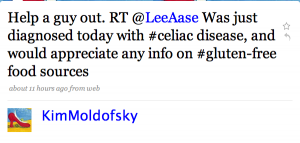I’m looking forward to participating in the 2009 Healthcare Association Conference sponsored by ASAE & The Center for Association Leadership (the acronym for which, oddly enough, is an anagram of my last name) in Baltimore on Tuesday. See the conference agenda (PDF).
Here’s the overview for the panel discussion I’ll be joining on Tuesday:
The growing popularity and power of social technologies creates both new challenges and opportunities for healthcare associations, as well as for the healthcare system itself. While the social web opens broader access to medical knowledge, enables greater collaboration among health professionals, and is actively transforming both healthcare advocacy and medical education, issues of information accuracy and patient privacy are enduring sources of concern. Listen to a candid and thought provoking dialogue on the present and future impact of social technologies on healthcare from players in different parts of the system.
I’m particularly pleased that this discussion will take place in two 75-minute segments, which will enable an in-depth exploration. As the brochure describes the focus of each:
- In part one of this session, the panel will explore the current state of social technology use in healthcare, and some of the key strategic challenges and opportunities created by social technologies.
- In part two of this session, the panel will focus specifically on how healthcare associations should be thinking about the application of social technologies to their work, as well as the future of social technology in the world of healthcare.
I’ll be joining Jeff De Cagna, chief strategist and founder, Principled Innovation, LLC (moderator) (@pinnovation); Gina Ashe, chief marketing officer, Sermo, Inc.; Ted Eytan, MD, MS, MPH, (@tedeytan) medical director, delivery system operations improvement, The Permanente Federation, LLC; Frank Fortin, director of communications, Massachusetts Medical Society (@frankfortin). We’re all going to be trying to follow Guy Kawasaki’s advice for panelists, and I’m sure Jeff will be a great moderator, too, involving the “audience” in the discussion. No long, boring PowerPoints: we will each have no more than three (3) slides.
I’ll be blogging about our discussion after the fact, and maybe tweeting occasionally during or between the sessions. But mainly I look forward to engaging in an interesting discussion, not just among the panel but with the whole group. I enjoy giving presentations about what we’re doing in social media at Mayo Clinic, but it will be even better to learn through the interchange with others.
I’m also excited that I’ll get to meet Ed Bennett (@EdBennett), who manages Web sites for the University of Maryland Health System and compiled the listing of hospitals using social networking. This again demonstrates the power of Twitter; I saw him offering rides from Baltimore to HealthCamp Philly…which led me to ask whether he was based in Baltimore…and we discovered he works across the street from where I will be on Tuesday. So we’ve arranged to get together after the conference. How cool is that?


